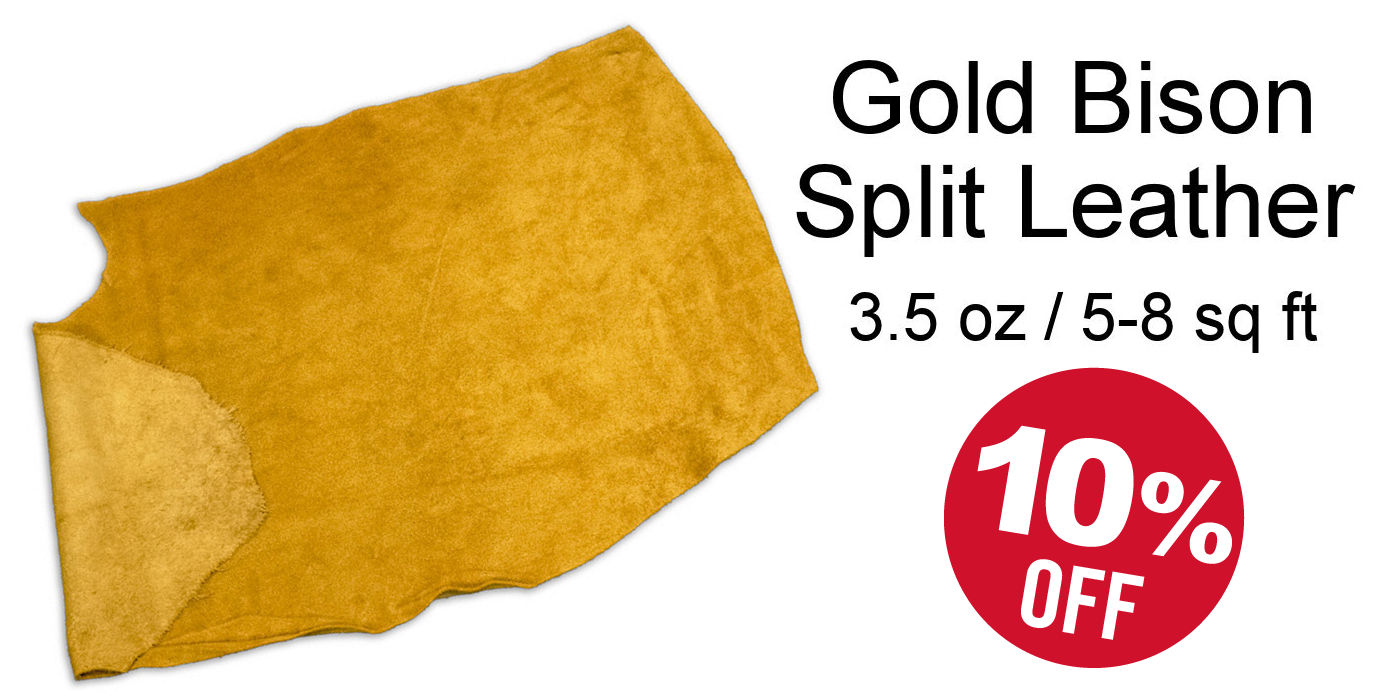

Mountain Man, Buckskinner
& Frontier Historic Site Resources
Credit Above Photo: , Fort Ligonier, CC BY-SA 2.0, via Wikimedia Commons
Mountain Man, Buckskinner & Frontier Historic Site Resources
Credit Above Photo: Fort Ligonier, CC BY-SA 2.0, via Wikimedia Commons
Crazy Crow Trading Post offers this list of Crazy Crow Trading Post offers this list of Mountain Man, Buckskinner & Frontier Historic Site Resources and other related links to help you in your search for information the early American frontier and fur trade era. Inclusion in this list does not represent an endorsement by Crazy Crow, although we do try to be selective – and reserve the right to do so.
Bent’s Old Fort National Historic Site
Located near La Junta, Colorado. William and Charles Bent, along with Ceran St. Vrain, built the original fort on this site in 1833 to trade with plains Indians and trappers. The adobe fort quickly became the center of the Bent, St.Vrain Company’s expanding trade empire that included Fort St.Vrain to the north and Fort Adobe to the south, along with company stores in Mexico at Taos and Santa Fe. The primary trade was with the Southern Cheyenne and Arapaho Indians for buffalo robes.
Colonial Michilimackinac – Mackinaw City, Michigan
Colonial Michilimackinac is a reconstructed 1715 French fur-trading village and military outpost that was later occupied by British military and traders. Today, it features re-enactments from British 1770s occupation and the American Revolution era. A National Historic Landmark, Colonial Michilimackinac is accredited by American Association of Museums. Colonial Michilimackinac is located in Mackinaw City, Michigan at the base of the Mackinac Bridge. Check the website for daily schedule & activities.
Castillo de San Marcos | St. Augustine, FL
The Castillo de San Marcos (Spanish for “St. Mark’s Castle”) is the oldest masonry fort in the continental United States; it is located on the western shore of Matanzas Bay in the city of St. Augustine, Florida. It was designed by the Spanish engineer Ignacio Daza, with construction beginning in 1672, 107 years after the city’s founding by Spanish Admiral and conquistador Pedro Menéndez de Avilés, when Florida was part of the Spanish Empire. When Britain gained control of Florida in 1763 pursuant to the Treaty of Paris, St. Augustine became the capital of British East Florida, and the fort was renamed Fort St. Mark until the Peace of Paris (1783) when Florida was transferred back to Spain and the fort’s original name restored. In 1819, Spain signed the Adams–Onís Treaty which ceded Florida to the United States in 1821; consequently, the fort was designated a United States Army base and renamed Fort Marion, in honor of American Revolutionary War hero Francis Marion.
Conner Prairie – Fishers, Indiana
Conner Prairie is one of the largest attractions in the region and one of the most visited outdoor museums in the country. They have a long history of innovation that spans the fields of science, history, art, and nature. On their grounds, every guest has the opportunity to pursue fun and knowledge in a way that is tailored to them. In a time where meals are rushed and everyone is in a hurry to get to soccer practice or ballet class, Conner Prairie provides families with multi-generational opportunities to come together, interact and learn in new and unique ways in the heart of Indiana. Every day, they inspire curiosity and foster meaningful interaction with unique, engaging experiences that don’t exist anywhere else.
Fort Belle Fontaine Historic Site – St. Louis, MO
Established in 1805 on the south, low-lying bank of the Missouri River, near the confluence of the Mississippi River, Belle Fontaine was the first U.S. military post located in the newly acquired Louisiana Territory. Originally called Cantonment Belle Fontaine, it served as an American Indian trading post for local Sac, Fox and other American Indian tribes.
From its early days, the Belle Fontaine site served as the launching or stopover point for a number of expeditions to the far reaches of the American West. Among those explorers was pioneering military officer Zebulon Pike & Lewis and Clark.
Fort Bridger State Historic Site – St. Louis, MO
Fort Bridger State Historic Site maintains and interprets historic structures and remnants from its 5 eras of occupation which include the Mountain Men, Mormons, Military, Milkbarn/ Motel and Museum. The site also interprets the many trails that came through Fort Bridger including the Oregon Trail, California Trail, Mormon Pioneer Trail, Pony Express Trail, Overland Trail, Cherokee Trail and Lincoln Highway. The fort is not far off the interstate and is a great place to stop, relax and learn our history. Visit Jim Bridger’s famous trading post on The Oregon Trail as well as the fort built by the US Army and the old hotel on the Lincoln Highway.
Don’t miss The Fort Bridger Mountain Man Rendezvous held annually the first weekend of September at Fort Bridger Wyoming. This is a mountain man rendezvous in celebration of the Fur Trade Rendezvous Era that occurred in the Rocky Mountains between 1825-1840. It is one of the largest mountain man gatherings in the nation and is an experience your family will be sure to remember for years.
Fort Clatsop National Memorial – Astoria, OR – The Wintering Post 1805-1806 Web Exhibit!
This site commemorates the 1805-06 winter encampment of the 33-member Lewis and Clark Expedition. A 1955 community-built replica of the explorers’ 50’x50′ Fort Clatsop is the focus of this 125-acre park. The fort, historic canoe landing, and spring are nestled in the coastal forests and wetlands of the Coast Range as it merges with the Columbia River Estuary. The Salt Works unit commemorates the expedition’s salt-making activities. Salt obtained from sea water was essential to the explorers’ winter at Fort Clatsop and their journey back to the United States in 1806.
Fort Clinch State Park – Fernandina Beach, FL
Fort Clinch is a 19th-century masonry coastal fortification, built as part of the Third System of seacoast defense conceived by the United States. It is located on a peninsula near the northernmost point of Amelia Island in Nassau County, Florida. The fort lies to the northeast of Fernandina Beach at the entrance to the Cumberland Sound, in the northeast part of the state. Today it is included within the boundaries of Fort Clinch State Park. This site was first fortified in 1736 by the Spanish, when they held colonies in Florida. From 1736, various nations to control the territory have garrisoned and fortified this site to protect the entrance to the St. Marys River and Cumberland Sound. After the end of the Second Seminole War, the United States started construction of a fort, later named Fort Clinch, in 1847. It was part of its Third System of coastal defenses conceived earlier in the century, which guided fortifications throughout this period. The fortified compound is pentagonal in shape, with both inner and outer walls, and consists of almost five million bricks. There are corner bastions and embrasures in the outer walls and several structures in the interior courtyards, including a two-story barracks. The fort was named in honor of General Duncan Lamont Clinch after his death in 1849. General Clinch fought in the War of 1812 and was an important figure in the First and Second Seminole Wars.
Fort King National Historic Monument | Ocala, FL
This property was the original site of Fort King, a major military post during the Second Seminole War. As the first interior fort in Florida, Fort King was a symbol of the United States government’s resolve to conquer an inhospitable land. Soon after the war concluded, Fort King was turned over to the people of the newly established Marion County, becoming the county seat and first county courthouse. Today, Fort King is a 40-acre National Historic Landmark owned jointly by the City of Ocala and Marion County. The adjacent memorial site is owned by the Daughters of the American Revolution – Ocala Chapter and leased to the City of Ocala and Marion County for 99 years. The site is managed by the City of Ocala. Funding assistance and logistics support is provided by a 501(c)3 organization, Fort King Heritage Foundation.
Fort Ligonier is a British fortification from the French and Indian War located in Ligonier, Pennsylvania, United States. The fort served as a staging area for the Forbes Expedition of 1758. During the eight years of its existence as a garrison, Fort Ligonier was never taken by an enemy. It served as a post of passage to the new Fort Pitt, and during Pontiac’s War of 1763, was a vital link in the British communication and supply lines. It was attacked twice and besieged by the Native Americans, prior to the decisive victory at Bushy Run in August of that year. The fort was decommissioned from active service in 1766. Today, there is a museum next to the reconstructed fort. Inside the museum there are artifacts from the battle. An individual can take a guided tour of the fort, and on Fort Ligonier Days, the fort’s cannons are fired.
Fort Mackinac – Mackinaw City, Michigan
Constructed by British soldiers during the American Revolution, Fort Mackinac served as a sentinel in the Straits of Mackinac for 115 years. Today the original restored fort is a National Historic Landmark. Begin your tour with the audio visual presentation, “Heritage of Mackinac,” in the Post Commissary. Then trace the footsteps of British and American troops as you explore the historic buildings, enjoy the exhibits, and watch lively demonstrations.
Fort Toulouse/Fort Jackson Park – Wetumpka, AL Web Exhibit!
The site of Fort Toulouse/Fort Jackson Park has been occupied for more than three thousand years. In 1717, the French joined the Native American populations, building the first Fort Toulouse at the head of the Alabama River. Erosion of the Coosa River bank led to the rebuilding of the fort.
The fort is the host to an active Living History program, providing insight into the Native American and military history of the site and lifestyle during the 18th and early 19th centuries. There are monthly Living History presentations, as well as major events in the spring and fall. Open daily except for Christmas Day and New Year’s Day. Minimal Admission and Campground Fees Charged. Fort Toulouse/Fort Jackson is located just north of Montgomery, off US Highway 231 at Fort Toulouse Road, Wetumpka, Alabama 36092 (334) 567-3002.
Fort Laramie National Historic Site
Originally established as a private fur trading fort in 1834, Fort Laramie evolved into the largest and best known military post on the Northern Plains before its abandonment in 1890. This “grand old post” witnessed the entire sweeping saga of America’s western expansion and Indian resistance to encroachment on their territories. Located at confluence of the Laramie and North Platte Rivers in southeast Wyoming, this famed outpost – first as a fur trade post and then as a military garrison played a strategic role in transforming the United States. Here, for 56 years successive waves of trappers, traders, Native Americans, missionaries, emigrants, soldiers, miners, ranchers and homesteaders interacted and left their mark on a place that would become famous in the history of the American west – Fort Laramie.
In 1834 Robert Campbell and William Sublette established the first “Fort Laramie” here. Officially named Fort William, the post was rectangular, and small, measuring only 100 by 80 feet. Hewn cottonwood logs 15 feet high formed the fort’s palisade. With the beaver trade already in decline, Campbell and Sublette recognized that the future of the fur trade lay in trading with the Native population for buffalo robes. Fort William enjoyed a near monopoly on the buffalo trade in this region until a competing trading post, Fort Platte, was built a mile away in 1841. This rivalry spurred Fort William’s owners to replace their own aging fort with a larger, adobe walled structure named Fort John.
Fort Mandan – Washburn, North Dakota – The Wintering Post 1804-1805
The Lewis and Clark Expedition arrived at the Mandan-Hidatsa Indian villages on the Upper Missouri River on October 25, 1804. They found the Mandan people very hospitable and decided to remain at this wintering site until the spring thaw when they would resume their up-river journey. On November 3, William Clark made a simple entry in his journal, “We commence building our cabins.” These cabins formed part of an enclosure that was christened Fort Mandan in honor of their hosts. As it turned out, Fort Mandan was occupied longer than any of the three winter posts used by the expedition.
Fort Nisqually Historic Site – Tacoma, WA
A Hudson’s Bay Company outpost built in 1833, Fort Nisqually was the first European settlement on Puget Sound. Fort Nisqually is now a living history museum where volunteers and staff, in period clothing, demonstrate the crafts of the 19th century and engage visitors in historic dialogue during the Living History Days and other events throughout the year. Website is full of info and is easy to navigate.
Fort Phil Kearny Historic Site
The largest of the three forts built along the Bozeman Trail leading to the gold fields in Montana, Fort Phil Kearny was established by the U.S. Army on July 15, 1866 near present-day Story, WY, along with Fort Reno northeast of present Kaycee, Wyoming. and Fort C.F. Smith, Montana. Fort Phil Kearny’s original purpose was to protect freighters, gold prospectors and other travelers along the “Bloody Bozeman” from attack by Plains Indians wary of further encroachment by pioneers and the military. An 8-foot-tall wooden stockade fortified Fort Phil Kearny’s 17 acres. Two major battles, the Fetterman fight and the Wagon Box fight, occurred near the fort along with numerous smaller skirmishes. The Fetterman fight in December 1866 resulted when Capt. William Fetterman allowed himself and his troops to be lured over a hill north of the fort and outside of timely supportive distance from Fort Phil Kearny. He and all 80 men in his command were killed by Cheyenne, Arapaho and Sioux warriors.
Fort Vancouver – Vancouver, WA
Fort Vancouver was a surprising place: it was a fur trade post, but employed more people at agriculture than any other activity. It was a large business that kept order and stability by employing many different ethnic groups. It was a British establishment, but the primary languages were Canadian French and Chinook Jargon. It represented British territorial interests, yet made American settlement in the Northwest possible. Cultural demonstrations and evening programs are held during the summer months, cultural demonstrations and evening programs highlight the ethnic and cultural diversity of the original population of Fort Vancouver. Virtual tour available online. For more information, check the website.
Historic Deerfield Massachusettes
First settled in 1669, Deerfield is one of the few towns settled by English colonists along the eastern seaboard that retains its original scale and town plan. “Historic Deerfield Inc.”, founded in 1952, is an outdoor history museum that focuses on the history and culture of the Connecticut River Valley and early New England. It both educates about the lifestyles of the diverse people who lived here long ago and of preserves antique buildings and collections of regional furniture, silver, textiles, and other decorative arts. Visitors are offered guided and self-guided tours of 12 antique houses ranging in age from 1730 to 1850. Eleven of these houses are on their original sites.
North West Company Fur Post – Pine City, Minnesota
The North West Company Snake River post near Pine City, Minnesota is an authentic reconstruction of a fur-trade wintering post built and operated under the direction of company partner John Sayer during the years 1804-05. The post has been reconstructed on its original 1804 site. A new Visitors Center features a retail shop and modern amenities, with an exhibits hall scheduled to open in the spring of 2003. New for 2002: Guided tours of the historic site are offered, including to a relocated Ojibwe encampmen. Enjoy walking the heritage trails.
Prickett’s Fort is a day-use historical and recreational park, located just north of Fairmont, West Virginia, two miles off I-79 at Exit 139. The original fort was built at the confluence of Prickett’s Creek and the Monongahela River in 1774, and provided a place of refuge for early settlers to the area. Now a state park, the site also includes the Job Prickett House, c. 1859, listed on the National Register of Historical Places. Both the reconstructed fort and the Prickett House are open for public tours from mid-April to Nov. 1, with a living history style interpretation. Visitors enjoy seeing costumed artisans at work weaving, blacksmithing, cooking, and building muzzleloader firearms. A dozen or more special events are conducted annually.
Old Fort William – Thunder Bay, Ontario, Canada
Old Fort William is a provincially-funded historic site operated by the Ontario Ministry of Tourism, Culture and Recreation. Through its living history program, the Fort depicts the fur trade activities of the North West Company at Old Fort William, inland headquarters and site of the Company’s annual Rendezvous from 1803-1821.
A CD-ROM package includes a virtual tour of Old Fort William — biographies, a timeline, a place index map, complete cross-disciplinary study units in science and technology, cultural dynamics, a history of the fur trade and a Teacher’s Guide. “Northwest to the Pacific: A Fur Trade Odyssey” is one of the most exciting historical CD-ROMs ever produced.
Fort Union Trading Post – Williston , ND
In 1828 the Assiniboine Indians requested that John Jacob Astor’s American Fur Company establish a trading post in their homeland to protect them from hostile tribes. Kenneth McKenzie thus founded Fort Union in what is now North Dakota. Strategically located near the homelands of 10 Northern Plains tribes[1], Fort Union, possibly first known as Fort Henry or Fort Floyd, was built in 1828 or 1829 by the Upper Missouri Outfit managed by Kenneth McKenzie and was capitalized by John Jacob Astor’s American Fur Company. Until 1867, Fort Union was the central, and busiest, trading post on the upper Missouri, instrumental in developing the fur trade in Montana. Here Assiniboine, Crow, Cree, Ojibwe, Blackfoot, Hidatsa, Lakota, and other tribes traded buffalo robes and furs for trade goods including beads, clay pipes, guns, blankets, knives, cookware, cloth, and alcohol. During the historical period, Fort Union served as a haven for many frontier people and contributed to further economic growth on the American frontier. As headquarters for the American Fur Company, it played a primary role in the growth of the fur trade and allowed fur trade entrepreneurs to exert considerable influence in forming policies that affected the Indian nations of the region. The presence of the fort near the northern border of the United States also symbolized national sovereignty in the region.
From battlefields and forts to the Historic Governor’s Mansion to the Oregon Trail ruts, Wyoming’s historic sites are home to a rich and diverse history. Wyoming played a significant role in forming the West as we know it. There is no shortage of ways to discover and experience this unique Western history for yourself, through touring military forts and visiting monuments and trail markers. Don’t miss unique stops across the state like Ames Monument, Independence Rock and many more. Join one of several rendezvous events around the state to watch history come to life. You can also find Heart Mountain Interpretive Center or Medicine Wheel; each holds a more inclusive look at history through different cultural lenses.
Rendezvous & Historic Reenactment Articles
Rendezvous & Historic Reenactment Resources
Current Crow Calls Sale
November – December
SAVE 10%-25% on popular powwow, rendezvous, historic reenactor, bead & leather crafter supplies, second quality buffalo robes for special projects, bison splits & buckskin, Native American Design Fleece Blankets, Patterns, Carbon Steel Blades, Fan & Roach Feather Cases, beading kits, leather beading tools, camp utensils, huge selection of imported beadwork in Czech beads, strung fluffs, dream catcher kits, large floral fringed scarf and embroidered cashmere wraps, and much more.











